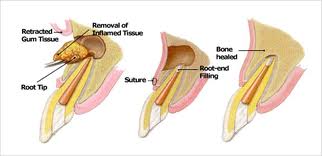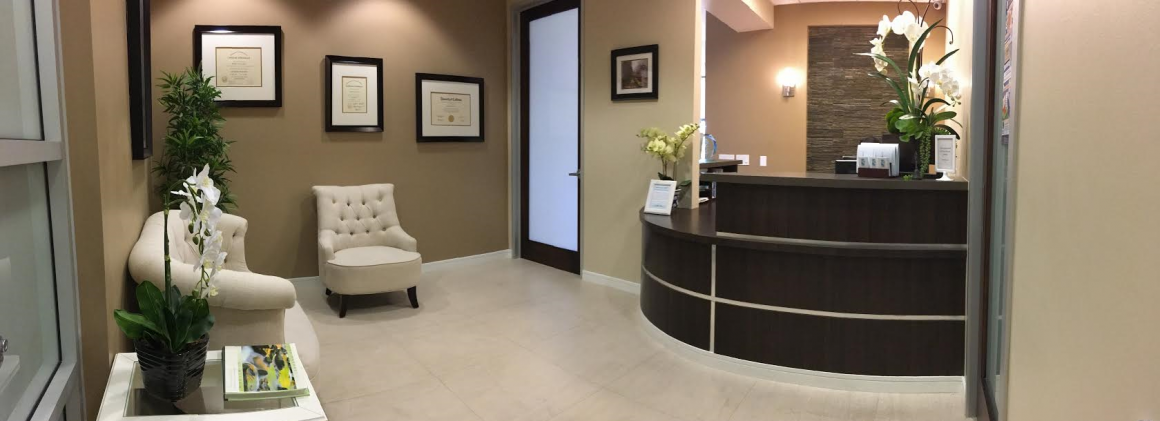 What is an Endodontist and what do they do?
What is an Endodontist and what do they do?
Endodontists are dentists who specialize in maintaining teeth through Endodontic Therapy, this is also known as root canal therapy. The word “endodontic” comes from “endo” meaning inside and “dont” meaning tooth.
All dentists are trained in diagnosis and endodontic therapy. Some teeth, however, can be especially difficult to diagnose and treat. That’s why you have been referred to Lu Endodontics.
In addition to four years of dental school, Dr. Lu received three more years of advanced education. She studied the latest proven root canal techniques and procedures in great depth. This makes her very experienced in the diagnosis and treatment of more difficult cases. For this reason, many dentists choose to refer their patients to Dr. Lu for their endodontic needs.
Dr. Lu is also a specialist member of the American Association of Endodontists.

 We Diagnose and Treat Pain
We Diagnose and Treat Pain
Oral pain such as toothaches or cracked / fractured teeth can often be difficult to pinpoint. Because of the vast network of nerves in the mouth, the pain of a damaged or diseased tooth often is felt in another tooth and/or in the head, neck, or ear. Dr. Lu is a specialist in diagnosing and treating this type of pain. Prior to every treatment, she performs a comprehensive examination to ensure that endodontic therapy is right for you.

We Treat Traumatic Injuries
Pulp damage is sometimes caused by a blow to the mouth, and Dr. Lu specializes in treating these traumatic injuries. For example, a blow to a child’s permanent tooth that is not fully developed can cause the root to stop growing. A procedure called apexification stimulates bone to be deposited at the end of the root which makes it possible to then save the tooth through a root canal procedure. Dr. Lu is specially trained in procedures for replanting teeth that have been knocked out of their sockets.
 Retreatment
Retreatment
As occasionally happens with any dental or medical procedure, a tooth may not heal as expected after initial endodontic treatment or pain continues despite therapy for a variety of reasons. Although rare, sometimes a tooth initially responds to root canal therapy but becomes painful or diseases months or years later. These could include complicated canal anatomy that was undetected in the first root canal procedure, the delay in placement of a crown or other restoration, or an insufficient restoration. Sometimes new problems may jeopardize a tooth that was already treated, such as new decay, a loose, cracked or broken filling, or a tooth fracture. Often, when this happens, the tooth often can be maintained with a second endodontic treatment.
 During endodontic retreatment, Dr. Lu will regain access to the root filing material. After removing the canal filing, Dr. Lu can clean the canals and carefully examine the inside of the tooth, searching for any hidden canals or unusual anatomy that requires treatment.
During endodontic retreatment, Dr. Lu will regain access to the root filing material. After removing the canal filing, Dr. Lu can clean the canals and carefully examine the inside of the tooth, searching for any hidden canals or unusual anatomy that requires treatment.
If retreatment is not an option, endodontic surgery might be considered to save the natural tooth.
What is an Endodontic Surgery? What is Apicoectomy?
There are many surgical procedures that can be performed to save a tooth. The most common endodontic surgery is called an apicoectomy, or root-end resection, which is occasionally needed when inflammation or infection persists in the bony area around the end of your tooth after a root canal procedure. Dr. Lu may recommend to perform an apicoectomy because she believes it is the best option for you. She will discuss your chances for success so that you can make an informed decision.
 In this procedure, the gum tissue near the tooth is opened to see the underlying bone and to remove any inflamed or infected tissue. The very end of the root is also removed. A small filling may be placed to seal the end of the root canal. Then a few stitches or sutures are placed in the gum to help the tissue heal properly. Over a period of months, the bone heals around the end of the root. Local anesthetics make the procedure comfortable, and most patients return to their normal activities the next day. Postsurgical discomfort is generally mild.
In this procedure, the gum tissue near the tooth is opened to see the underlying bone and to remove any inflamed or infected tissue. The very end of the root is also removed. A small filling may be placed to seal the end of the root canal. Then a few stitches or sutures are placed in the gum to help the tissue heal properly. Over a period of months, the bone heals around the end of the root. Local anesthetics make the procedure comfortable, and most patients return to their normal activities the next day. Postsurgical discomfort is generally mild.
